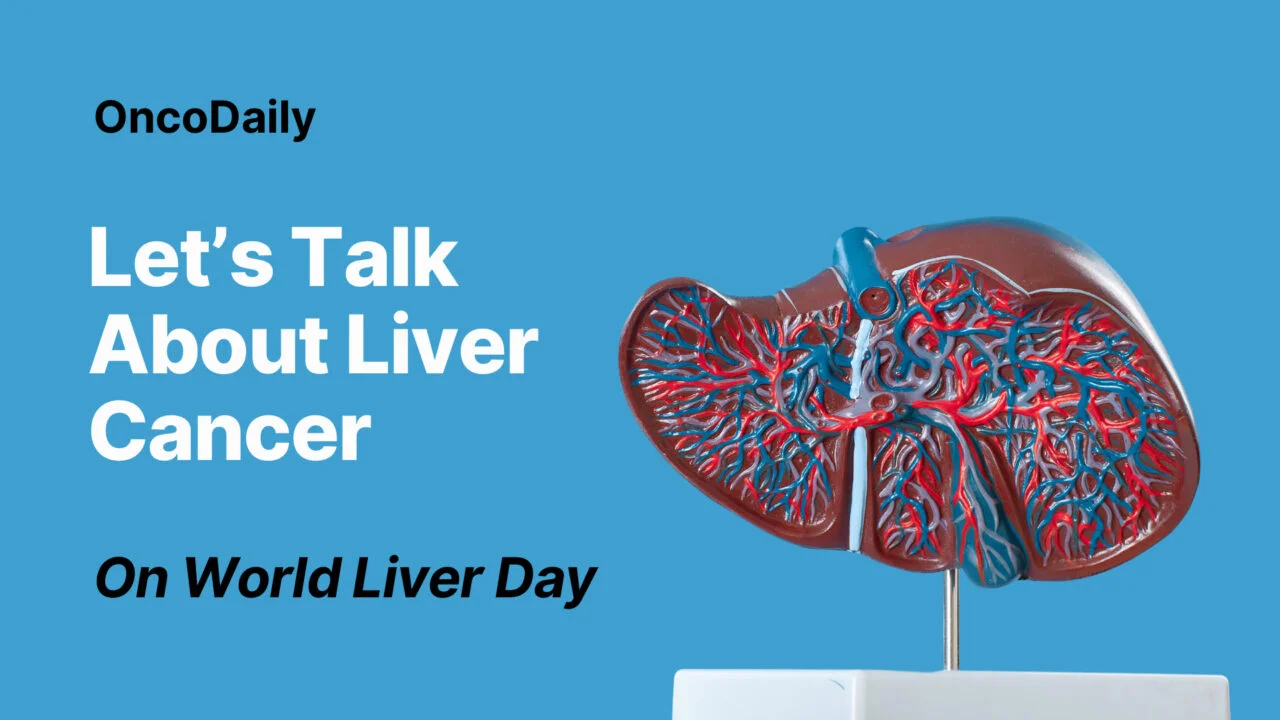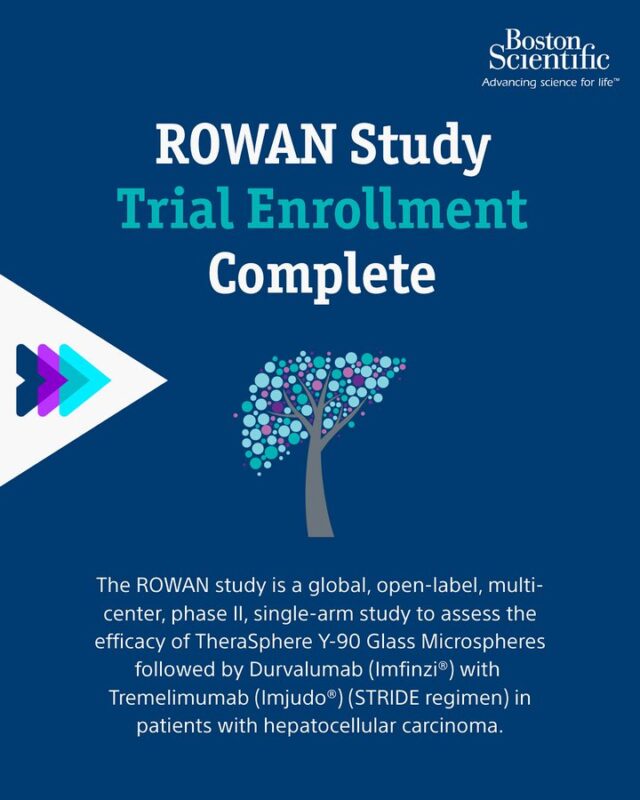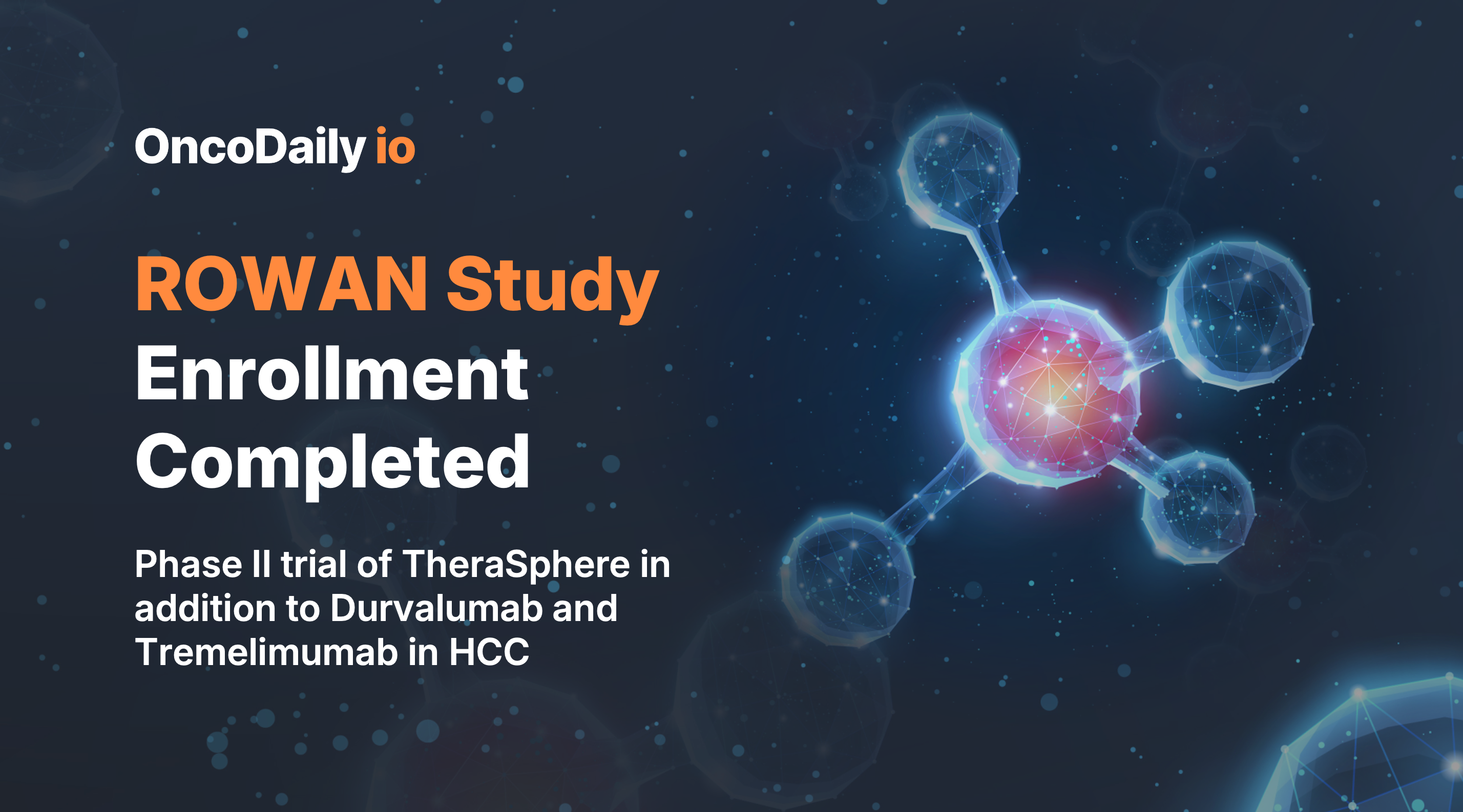The ROWAN study has officially completed enrollment, marking a pivotal milestone in the search for new treatments for hepatocellular carcinoma (HCC), the most common form of primary liver cancer. With limited curative options for many patients, innovative strategies are urgently needed. The ROWAN trial investigates whether combining TheraSphere™ Y-90 glass microspheres with the STRIDE immunotherapy regimen (durvalumab [Imfinzi®] plus tremelimumab [Imjudo®]) can deliver superior outcomes compared to standard liver-directed therapy alone. This article explains what the ROWAN study is, why it matters for HCC patients, how the trial is designed, and what earlier evidence suggests about the potential of this treatment combination.
What Is the ROWAN Study?
The ROWAN trial (ClinicalTrials.gov ID: NCT05063565) is a global, open-label, Phase II clinical study sponsored by Boston Scientific Corporation. It aims to evaluate the efficacy and safety of TheraSphere followed by immunotherapy in patients with unresectable hepatocellular carcinoma who are not candidates for surgery, ablation, or liver transplantation at the time of enrollment.
In total, the trial has enrolled 100 patients across up to 50 sites worldwide, making it one of the most significant efforts to explore the synergy between transarterial radioembolization (TARE) and checkpoint blockade immunotherapy. The study’s completion of enrollment in August 2025 represents an important transition point, paving the way for future analyses and eventual readout of primary results.
Why Target Hepatocellular Carcinoma With This Approach?
HCC accounts for over 80% of primary liver cancers globally and remains a leading cause of cancer-related mortality. While surgery and liver transplantation offer curative potential, most patients present with advanced disease or impaired liver function that excludes them from these options. For such individuals, liver-directed therapies such as TARE and systemic treatments like immunotherapy provide hope for extending survival and controlling tumor growth.
TARE has proven effective for local tumor control, while immunotherapy has shifted the standard of care in advanced disease. Combining these approaches is scientifically appealing: radiation from TheraSphere can stimulate immune activation, potentially sensitizing tumors to checkpoint inhibition and creating an additive or synergistic effect.

Study Methods and Design
ROWAN is structured as a prospective, multi-center, single-arm Phase II trial. Patients enrolled were adults aged 18 years or older with confirmed HCC, ECOG performance status 0–1, and tumors not exceeding 35% of total liver volume. Importantly, participants had to be ineligible for curative treatments like resection or transplantation.
The treatment sequence is carefully designed:
- TheraSphere™ Y-90 glass microspheres are delivered directly to the tumor through the hepatic artery.
- Patients then receive a single dose of tremelimumab (300 mg) in combination with durvalumab (1500 mg every four weeks).
- Durvalumab treatment continues for up to 18 months, or until disease progression or unacceptable toxicity occurs.
The primary endpoint of ROWAN is objective response rate (ORR), as defined by modified RECIST (mRECIST) criteria. Secondary endpoints include duration of response (DoR), progression-free survival (PFS), overall survival (OS), disease control rate (DCR), safety, immune-related adverse events, liver function changes, and patient-reported quality of life.
What Is TheraSphere?
TheraSphere is a form of selective internal radiation therapy (SIRT), also known as transarterial radioembolization. It consists of millions of microscopic yttrium-90 (Y-90) glass microspheres, each less than one-third the width of a human hair, which are infused into the hepatic artery supplying the tumor. Once lodged in the tumor’s vasculature, they emit localized beta radiation, directly damaging cancer cells while sparing much of the surrounding healthy liver tissue.
This targeted approach makes TheraSphere particularly valuable for patients with unresectable HCC, as it can achieve significant tumor shrinkage, delay disease progression, and downstage tumors to enable subsequent curative interventions in selected cases.
Why Combine TheraSphere With Durvalumab and Tremelimumab?
Durvalumab and tremelimumab together form the STRIDE regimen (Single Tremelimumab Regular Interval Durvalumab), which has demonstrated superior overall survival compared to sorafenib in advanced HCC (as shown in the HIMALAYA trial). Durvalumab targets PD-L1, helping restore T-cell function, while tremelimumab blocks CTLA-4, further enhancing immune activation.
Preclinical and clinical evidence suggests that radiation delivered by TheraSphere not only kills tumor cells but also modulates the tumor microenvironment, increasing antigen presentation and immune infiltration. This creates a biologically compelling rationale for combining TARE with checkpoint blockade. ROWAN is among the first global trials to test this approach systematically.
Preliminary Evidence From Previous Studies
Prior to ROWAN, multiple studies provided early signals that TARE combined with immunotherapy might improve outcomes in HCC:
- TARE vs. TACE: Studies have shown that radioembolization with Y-90 microspheres can deliver higher response rates and longer time to progression compared to transarterial chemoembolization (TACE), historically the standard liver-directed therapy.
- HIMALAYA Trial: The STRIDE regimen alone demonstrated a median overall survival of 16.4 monthscompared with 13.8 months for sorafenib, leading to its approval in advanced HCC.
- Early-phase trials have also indicated that TARE can enhance immune signaling within the tumor, creating a more favorable setting for checkpoint inhibitors. For example, increased infiltration of cytotoxic T cells and upregulation of immune pathways have been observed after TARE, supporting the hypothesis of synergy.
These findings laid the groundwork for ROWAN, which now has the scale and design to answer whether this combination can achieve more durable tumor control and survival benefits than TARE alone.
Current Status and Next Steps
With enrollment completed in August 2025, ROWAN has reached a crucial stage. Patients will now continue to be followed for efficacy and safety outcomes, with final data collection expected in 2027. Interim analyses are anticipated once sufficient patients complete key imaging and follow-up milestones, potentially providing an earlier glimpse into response rates and survival trends.
The study’s results could influence future treatment strategies for intermediate and advanced HCC. If the combination proves effective, it may expand the role of immunotherapy earlier in the treatment sequence and establish radioimmunotherapy as a standard of care option for selected patients.
What People are Saying Social Media?
Beau Bosko Toskich, Professor of Radiology, Director of Interventional Oncology, Mayo Clinic Florida, shared a post by Peter Pattison on X, adding:
”Deepest gratitude to ROWAN trial patients and our global investigators for pushing HCC treatment forward! Your passion and dedication is driving real progress.”
Quoting Peter Pattison’s post:
”Big news from the ROWAN study! We’ve officially completed enrollment, marking a major step forward in understanding the potential enhanced clinical benefits of combining TheraSphere with the immunotherapy STRIDE regimen in patients with Hepatocellular Carcinoma. This milestone brings us closer to understanding how we can better support patients through innovative, targeted therapies. Learn more about the ROWAN study here.”

The completion of patient enrollment in the ROWAN trial is a significant step forward in advancing treatment for hepatocellular carcinoma. By testing the combination of TheraSphere Y-90 glass microspheres with durvalumab and tremelimumab, the study explores one of the most promising therapeutic strategies for patients who are not candidates for surgery or transplantation.
While final results are still years away, preliminary evidence from earlier studies suggests that this approach could meaningfully enhance tumor control and survival. The oncology community now eagerly awaits ROWAN’s outcomes, which have the potential to reshape the treatment landscape of HCC and provide new hope to patients facing this challenging disease.
More posts featuring Beau Bosko Toskich.
